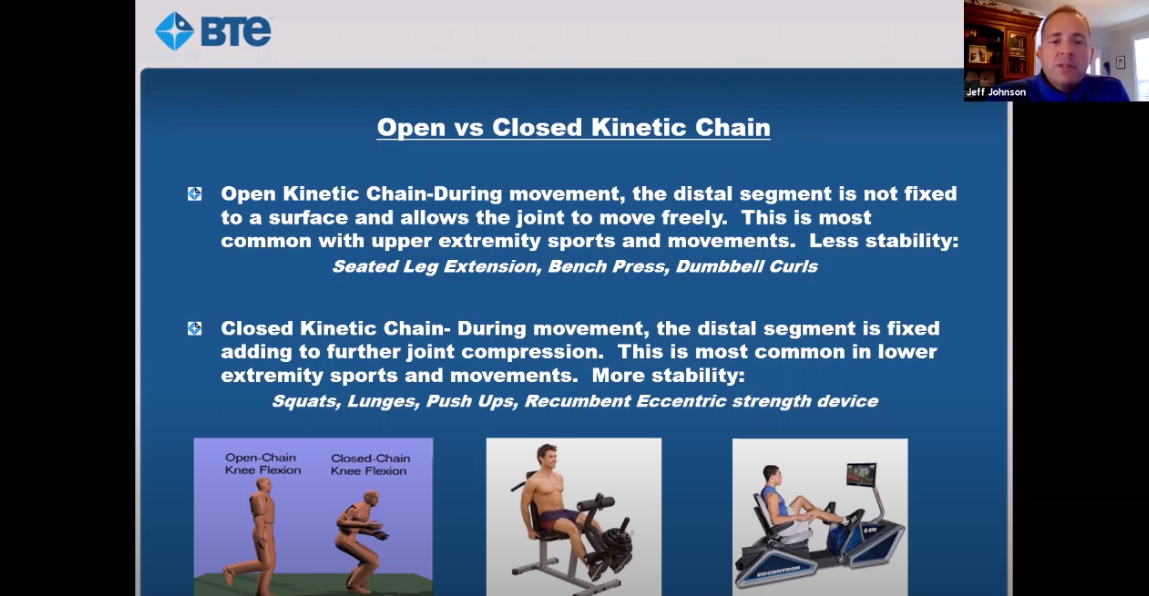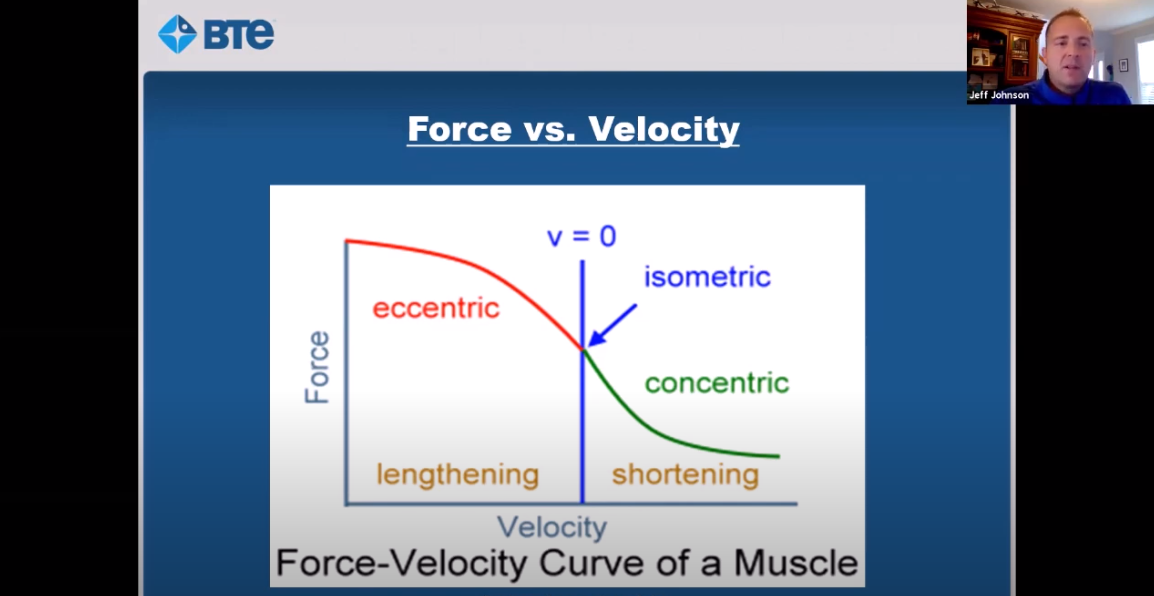Eccentric exercise: Go ahead, resist…
Eccentric exercise, muscles lengthening under force, has long been recognised as highly effective by Orthopaedic and Physiotherapy thought leaders. Until now, there wasn't a proven device to deliver the benefits of eccentric resistance in a safe, closed chain manner. This session delved further into the science of eccentric exercise and how the BTE Eccentron allows you to offer controlled but and targeted isolated eccentric exercise to nearly any client case, specific to each patient. Built on years of research & development in the growing field of eccentric resistance training, BTE Eccentron is THE eccentric resistance strength trainer with objective measures and results tracking. Helping clinicians deliver better outcomes, faster.
Eccentric muscle work occurs every day when a muscle lengthens under force: as when lowering a weight, descending stairs, or walking down a hill. Eccentric work provides unique responses and benefits compared to concentric exercise.
Key components of why eccentric exercise is important are:
- Higher Resistance Capacity: Body can resist 30-40% more weight (eccentric) than it can push (concentric)
- Low Oxygen Requirement: 80% less O2 needed due to muscles resisting rather than doing concentric work. This can be effective for many patient populations
- Lower Perceived Exertion: Comfortably produce more force output than in a traditional concentric exercise
We were joined by BTE clinical specialist Jeff Johnson who discussed the latest evidence on the effectiveness of eccentric exercise as well as some interesting injury statistics. We touch on how hamstring injuries account for 12% of injuries in elite football and how eccentric exercise is of huge benefit for ACL as this is such a common and problematic injury.
Many injuries occur in none contact situations in the deceleration phase. Building ‘tighter and stiffer’ muscle fibres can help prevent such injuries as it allows us to respond to external forces more quickly and have a more stable joint. Training eccentrically has a positive impact on concentric and isometric strength too. Identifying a deficit in eccentric strength can be an important factor for injury prevention and allow prehabilitation.
Open vs closed kinetic chain exercises
Open and closed kinetic chain exercises both have benefits within rehabilitation. We can generate significantly more (3 x advantage – Shulthes klinic) muscle force from a closed kinetic chain compared to open kinetic chain and is typically more functional rather than focusing on a specific muscle.
Eccentric exercise is very important for the older adult as well. As we get older, we lose type 2 fast twitch muscle fibres. This makes it more difficult for us to control movements such as descending stairs and moving objects.

The Eccentron
Provides closed kinetic chain only eccentric exercise to lower extremity. High force, endurance, power and isolation. It can isolate each leg individually (safer for the spine) offering neuromuscular training and immediate biofeedback. It provides platform for high volume of repetitions which is very difficult to achieve in any other way.
Watch the eccentric exercise webinar below:
The system is widely used in a variety of environments and many studies have been undertaken:
0:00 - 6:41 Introduction
6:42 - 11:24 Benefits of eccentric exercise
11:25 - 13:34 Open vs Closed kinetic chain
13:35 - 14:09 Injury reduction (muscles and tendons)
14:10 - 20:49 What is the Eccentron?
20:50 - 31:44 Eccentric research applications with Eccentron
Q&A
31:45 - 33:24 Using tech vs no tech
33:25 - 34:29 Are isometric loading exercises as effective as Eccentric?
34:30 - 36:21 Why isolate eccentrics?
36:22 - 37:39 Managing different patient groups
37:40 - 40:16 What if the patient experiences discomfort?
40:17 - 41:11 How does eccentric exercise link in with shockwave when treating tendons?
41:12 - 41:51 Eccentric training to prevent hamstring training
41:52 - 45:00 COVID-19 patients
Here is the latest bibliography of research papers.

